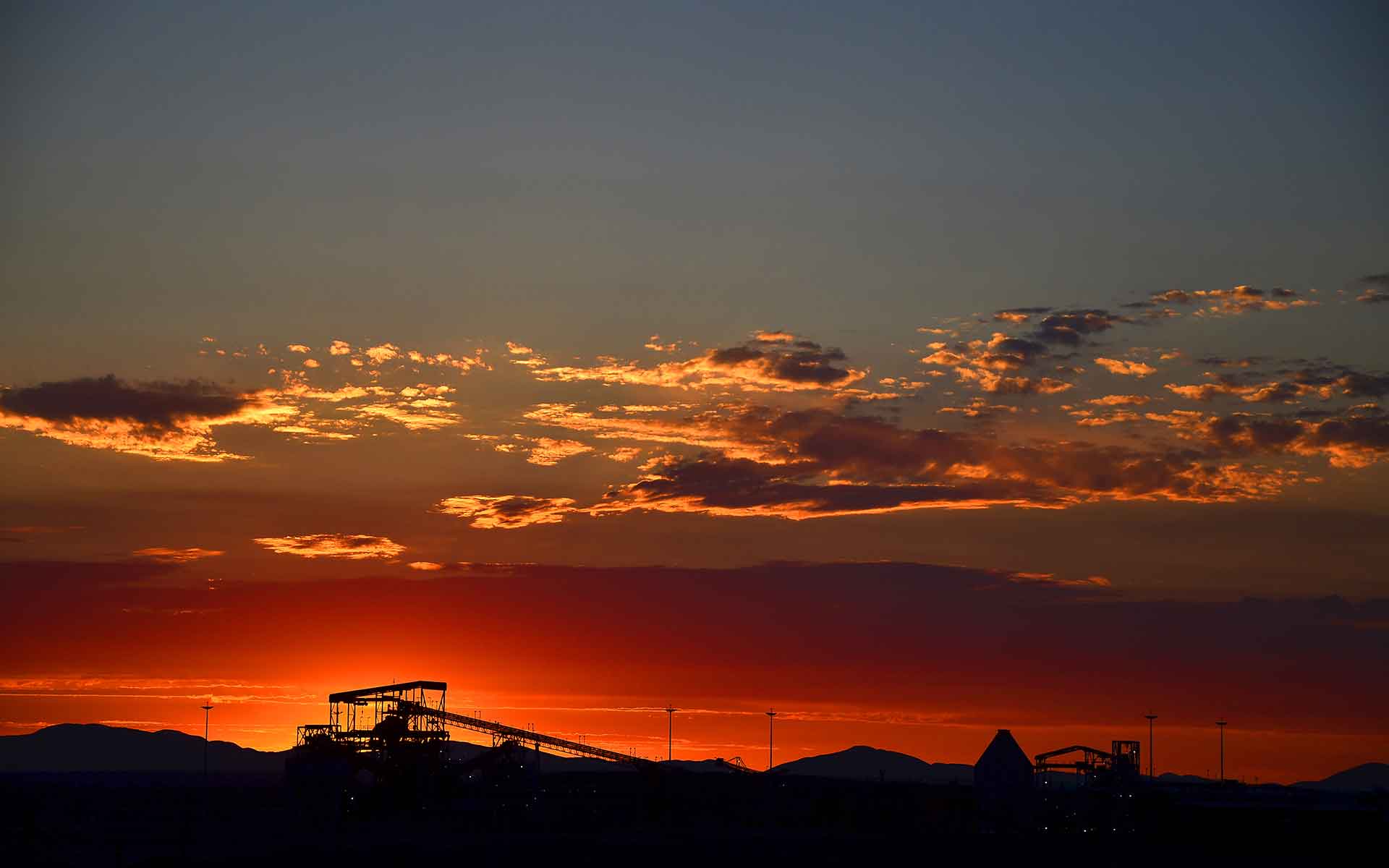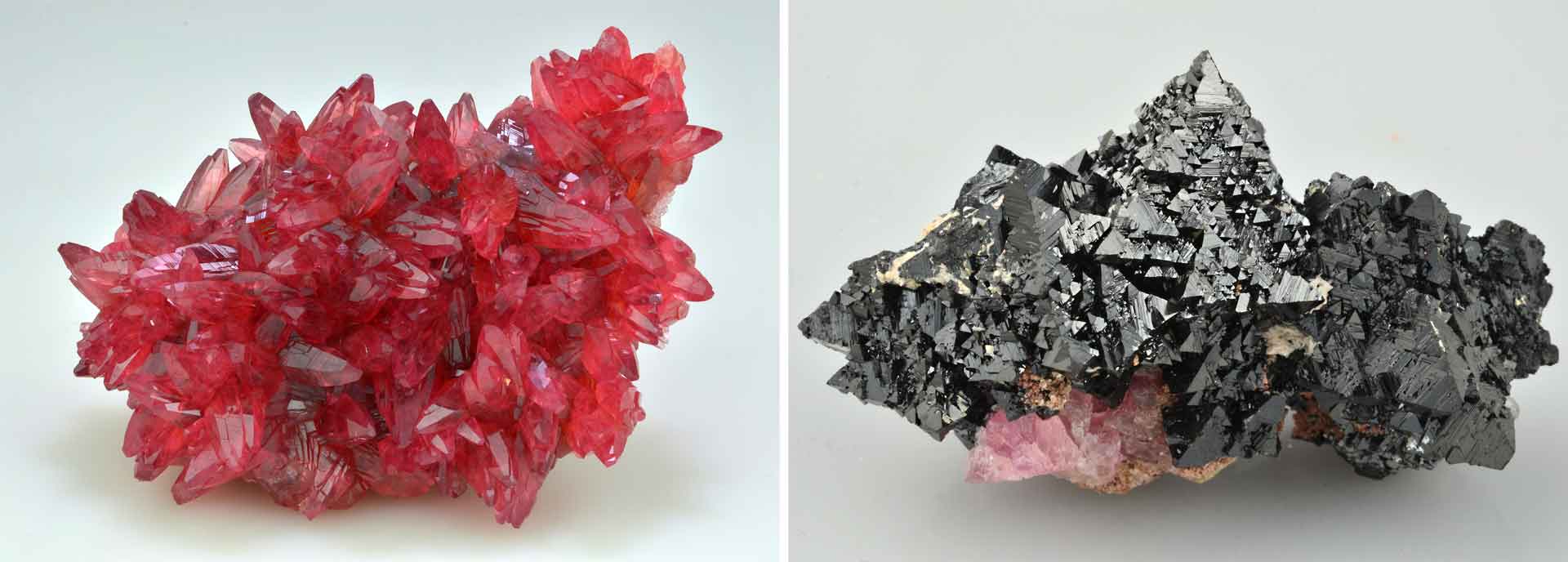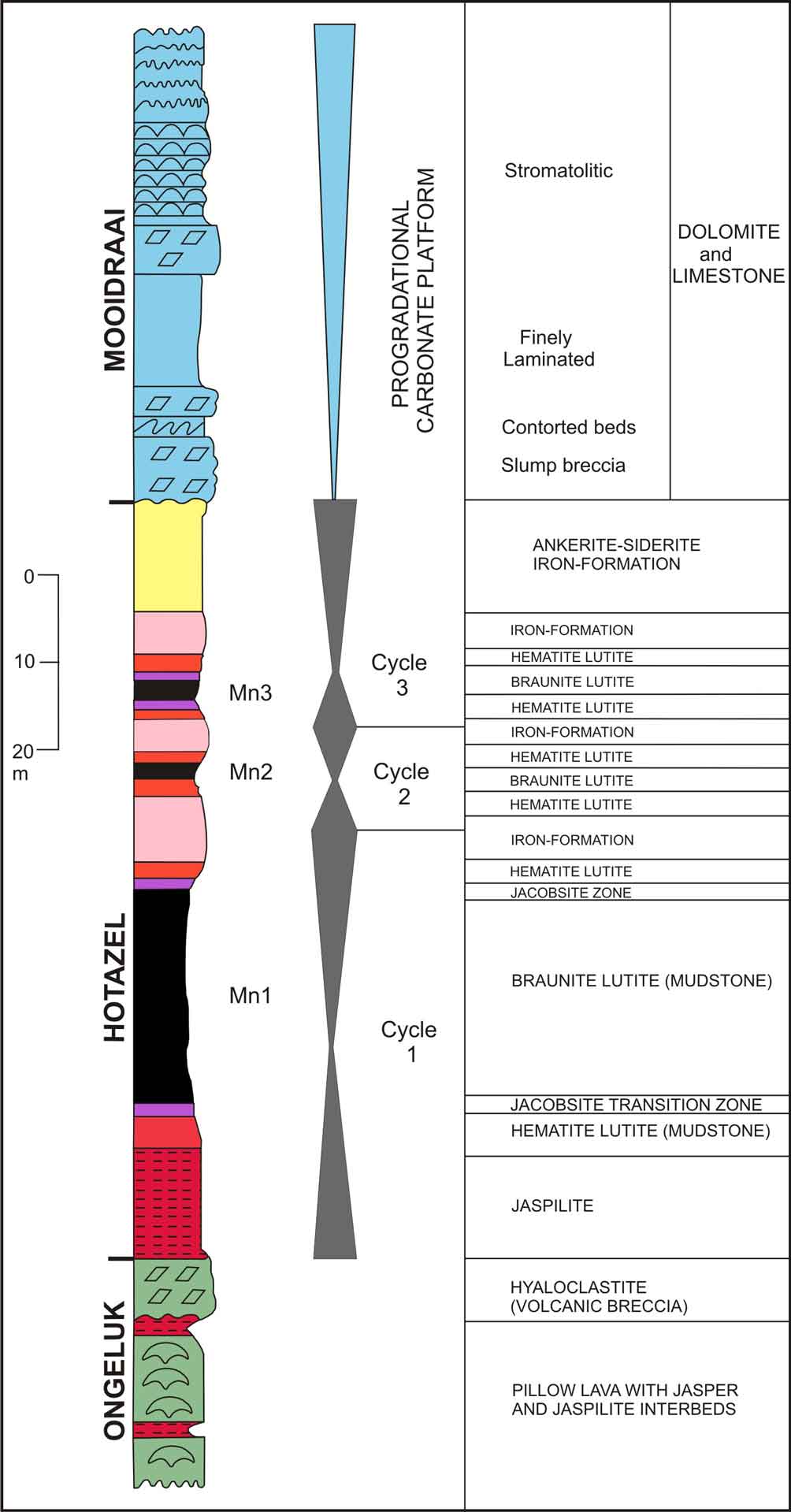
Sunset in the Kalahari Manganese Field with the silhouette of the N’Chwaning manganese mine in the foreground.
Geological Period
Paleoproterozoic
Main geological interest
Mineralogy
History of geosciences
Location
Northern Cape Province, South Africa, South Africa
27°12’07”S, 022°58’13”E
Sunset in the Kalahari Manganese Field with the silhouette of the N’Chwaning manganese mine in the foreground.
The Kalahari Manganese Field of South Africa is the worlds largest land-based resource of manganese hosting rare, unique and world-renowned minerals.
The Kalahari Manganese Field is by far the largest land-based manganese deposit on Earth and the world’s top producer of manganese metal tonnage. The Kalahari Manganese Field contains 182 valid minerals, including 28 type-locality species, several of which are unique to the deposit. In addition to its multifaceted mineralogy, this Palaeoproterozoic geological succession is one of the best preserved that illustrates the deposition and depletion of iron and manganese from the ancient ocean waters, heralding the advent of free oxygen in the Earth’s atmosphere. The complexity of the deposit, particularly the hydrothermally-altered ore, offers excellent opportunities for future mineralogical research.
- Geological description
The Kalahari Manganese Field is located in the Northern Cape Province, South Africa. Mineralization consists primarily of manganese oxide minerals hosted in the Palaeoproterozoic ~2.2 billion-year old sedimentary Hotazel Formation of the Transvaal Supergroup, where three layers of manganese ore are intercalated with banded-iron formations and carbonates. Throughout its geological history, the Kalahari manganese field has undergone multiple episodes of uplift, deformation, folding, thrusting and hydrothermal and supergene alteration. (Tsikos et al., 2003; Cairncross and Beukes, 2013). Two main ore types are present: 1) low-grade (~38 %Mn) primary sedimentary Mamatwan-type ore and 2) a billion years younger, high-grade (~45 %Mn) Wessels-type ore (Gutzmer and Beukes, 1995). The original, primary ore accounts for virtually all the manganese resources, yet the later Wessels-event produced the bulk of the world-famous rare and exotic minerals for which the Kalahari Manganese field is famous (Gutzmer and Beukes, 1996). The Wessels mine has produced half of the 28 type-species, including vonbezingite, effenbergerite, poldervaartite, and wesselsite all of which remain unique to the locality. The largest and finest aesthetic crystals of sturmanite, mozartite, ettringite and thaumasite known come from the Kalahari deposit, and the region’s rhodochrosite crystals grace mineral collections around the world.
- Scientific research and tradition
The area was first mapped in 1874 by G.W. Stow. De Villiers (1960) published the first memoir, and world-famous rhodochrosite was discovered in 1963. In 1983, sturmanite was described as one of the first type-species. Kleyenstüber (1984) documented the mineralogy. Most recent mineral discoveries in 2021 are hydroxymcglassonite and yuzuxiangite.
- Reference
Cairncross, B. and Beukes, N.J. (2013) The Kalahari Manganese Field: the adventure continues. Struik Nature (an imprint of Penguin Random House (Pty) Ltd), Cape Town.
Gutzmer, J. and Beukes, N.J. (1995) ‘Fault-controlled metasomatic alteration of early Proterozoic sedimentary manganese ores in the Kalahari manganese field, South Africa’, Economic Geology, 90(4), pp. 823–844. Available at: https://doi.org/10.2113/gsecongeo.90.4.823.
Gutzmer, J. and Beukes, N.J. (1996) ‘Mineral paragenesis of the Kalahari managanese field, South Africa’, Ore Geology Reviews, 11(6), pp. 405–428. Available at: https://doi.org/10.1016/S0169-1368(96)00011-X.
Kleyenstueber, A.S.E. (1984) ‘The mineralogy of the manganese-bearing Hotazel Formation, of the Proterozoic Transvaal Sequence in Griqualand West, South Africa’, South African Journal of Geology, 87(3), pp. 257–272.
Tsikos, H. et al. (2003) ‘Deposition, Diagenesis, and Secondary Enrichment of Metals in the Paleoproterozoic Hotazel Iron Formation, Kalahari Manganese Field, South Africa’, Economic Geology, 98(7), pp. 1449–1462. Available at: https://doi.org/10.2113/gsecongeo.98.7.1449.
Wilson, W.E. et al. (2017) ‘The N’Chwaning mines, Kalahari Manganese Field, Northern Cape Province, South Africa’, The Mineralogical Record, pp. 13–114.
- Author(s)
Bruce Cairncross.
University of Johannesburg. South Africa.
Craig Smith.
Geological Society of South Africa.
Deshenthree Chetty.
Mintek, South Africa.
Petra Dinham.
Mineralogical Association of South Africa (MINSA).


